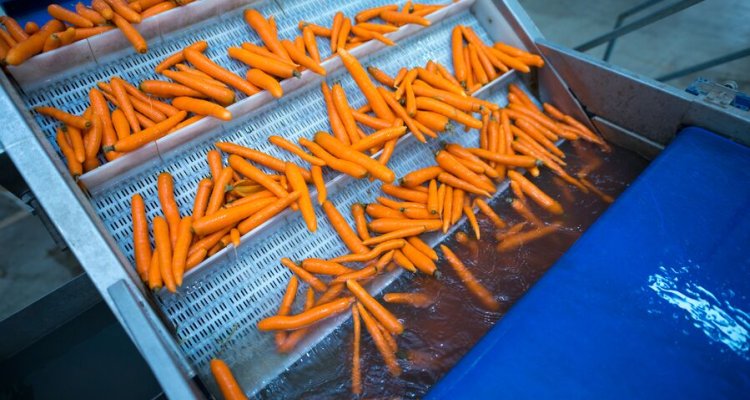
News
Anoxyl electrolyse and UV can help save water in vegetable processing
Vegetable processors are looking for ways to safely reduce their water consumption. Experiments by Wageningen researchers show that the application of an anoxyl (a free chlorine solution produced on-site from table salt) and UV in disinfecting washing water could potentially contribute to this.
The experiments were part of the Safe and Save Water research project. Researchers applied various water disinfection technologies to water that had been used to wash lettuce to be reused. The effects on water quality were measured by looking at UV transmission, chemical oxygen consumption and the presence of the Listeria innocua bacteria.
First, recirculating washing water was treated with UV first on a laboratory scale and after that on a pilot scale. Measurements showed that L. innocua could be significantly killed with a limited UV dose within 10 minutes. When treated with free chlorine (7-8 ppm free chlorine) and the combination of free chlorine with UV, the effect was even greater: in both experiments, there was already a substantial reduction within one minute. Finally, the researchers experimented on a laboratory scale with the use of ozone as a disinfection method. This method resulted in a large reduction in L. innocua within 10 seconds.
Modified washing line
In a follow-up pilot-scale experiment, recirculating water was again treated with the combination of free chlorine (7-8 ppm free chlorine) and UV, this time with a modified washing line. Rinsing when lettuce was cut and the use of dewatering belts (vibration and suction) and a vacuum slit improved water quality and L. innocua could still be killed significantly. In addition, researchers estimated the cost of the various washing treatments, which are higher than standard washing water but contribute to reducing the risk of foodborne infections and outbreaks.
The Safe and Save Water project provided more insight into the feasibility of safe (re)use of water in vegetable processing. There are a number of opportunities for further research, such as applying lower concentrations of free chlorine. Other combinations of technologies, like ozone followed by UV, are also of interest. Finally, further modifications to the washing line are possible to improve the quality of the processed water.
For the complete text of this article check the website of VMT (only for subscribers).